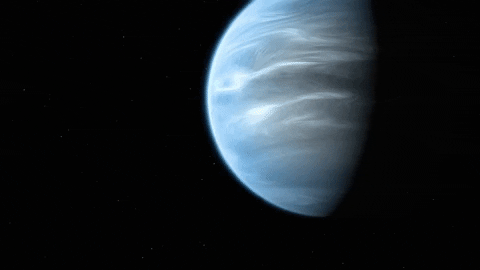
Craveology Cafe and the North Star Science Store are temporarily closed for renovation.

By Dr. Lisa Will, Resident Astronomer at the Fleet Science Center
For the first time, scientists have discovered the presence of water in the atmosphere of a planet outside of our solar system. Researchers used data from the Hubble Space Telescope and Spitzer Telescope to analyze the starlight passing through the atmosphere of this world to identify water. The water vapor was detected by comparing the known spectrum of the star to the spectrum of the planet’s atmosphere while the planet transited in front of its star.
This planet is twice the diameter of our own Earth, making it the smallest exoplanet to have known water in its atmosphere! The planet, named K2-18b, is orbiting a star (K2-18) in the constellation Leo, at a distance of 110 light-years from our solar system. This planet was discovered by NASA’s Kepler telescope, and it is known to be a “super-Earth”, with a mass only eight times the mass of our Earth.
K2-18b is in the “habitable zone” of the small red star it orbits, meaning that is in the distance from a star where the surface temperature is within the range that may allow for liquid water to be stable on the surface of that world. So, the water vapor detected in the atmosphere may rain down to the surface, indicating the presence of lakes or oceans. Although still different from Earth, K2-18b may be the first known habitable planet outside of our solar system.
But don’t plan your space travel to this new planet yet! The gravity in K2-18b is significantly higher than our own, its atmospheric composition is overall different and the small red star it orbits displays a high level of activity, making it likely to be exposed to high-level radiation which may render the environment of this planet to be inhospitable to life.
We still have much to learn from this exciting discovery of water vapor in the atmosphere of this world. Future observations, such as those that the James Webb Space Telescope will collect after its planned 2021 launch, should help pin down exactly what this distant world is like.
Wishing you clear skies!
Reference: https://www.nasa.gov/feature/goddard/2019/nasa-s-hubble-finds-water-vapor-on-habitable-zone-exoplanet-for-1st-time